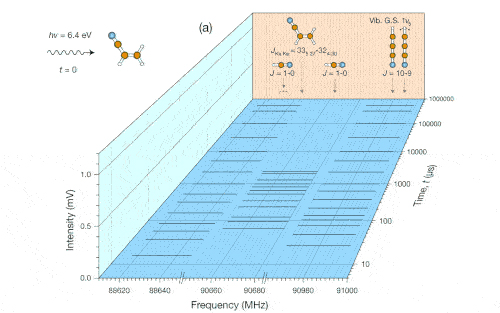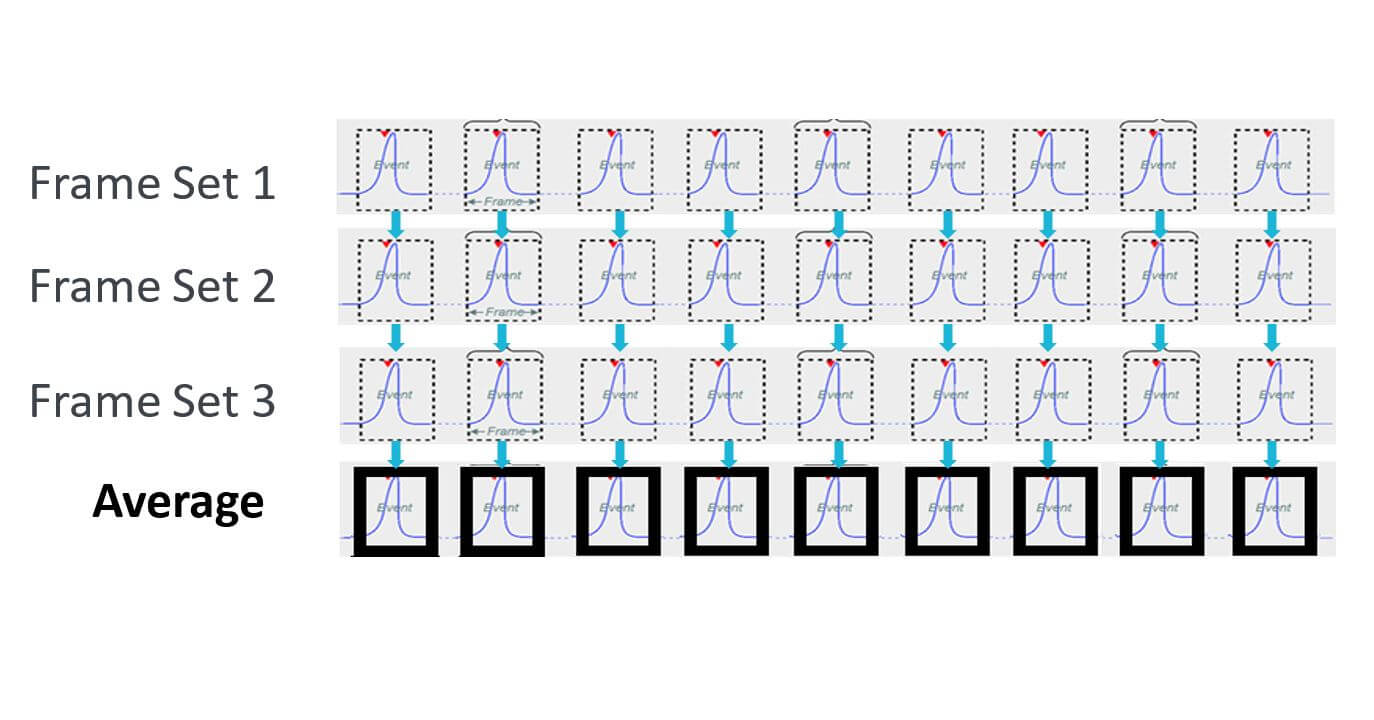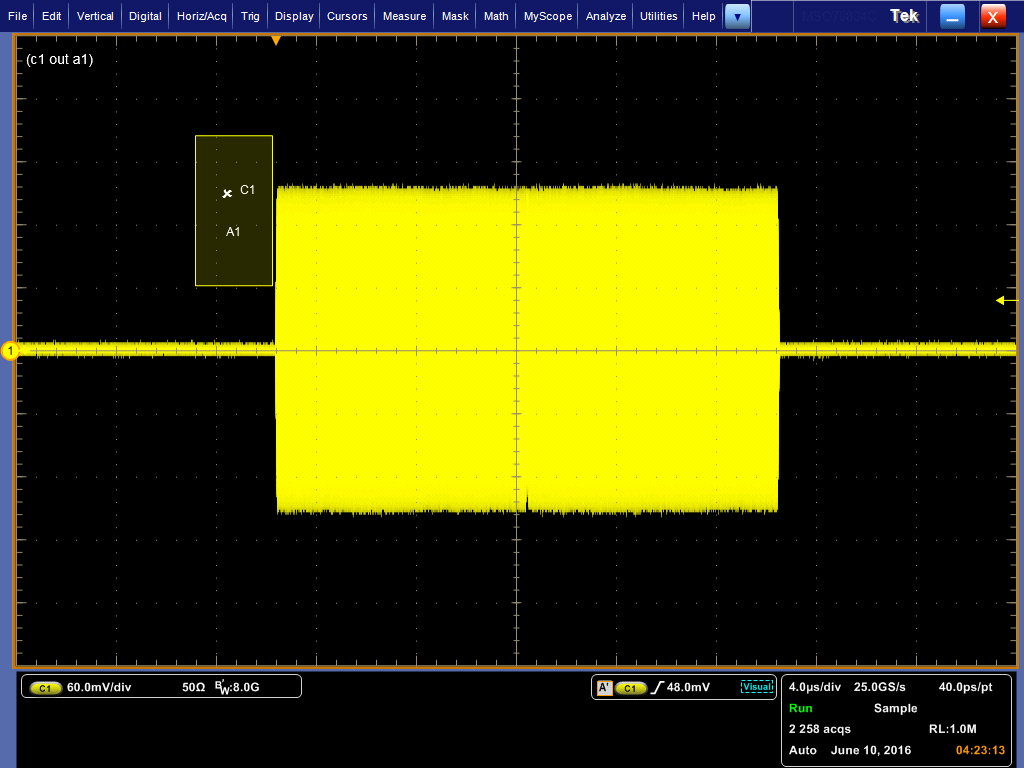
High Quality Signal Acquisition With Outstanding Signal Fidelity
Rotational spectroscopy provides accurate identification of the constituent molecules in a gas mixture, as well as the ability to study moment-by-moment chemical reactions within the test chamber. One of the challenges of this application is the requirement for very high dynamic range on the acquisition system, due to the very wide range of amplitude of the spectral lines. Researchers make use of averaging to extend the dynamic range of the oscilloscope, which then places performance demands on the oscilloscope to perform hundreds of thousands to millions of acquisitions in the shortest time possible.
New techniques continue to be created to extend the application of microwave spectroscopy. Today, researchers are now focusing on analyzing chemical reactions on a moment-by moment basis. Tektronix is tracking this work new features and functions in real-time scopes to support these changing needs.

Direct acquisition of microwave
and millimeter wave signals
Rotational spectroscopy involves transmitting microwave or millimeter wave chirps through a gas sample, acquiring the received signal with a broad-band signal acquisition system, converting the time domain data to frequency domain, and finally, performing a pattern match of the acquired data against theoretical spectral composition of specific molecules to identify the actual contents of the gas sample. Tek offers real-time scopes that can directly acquire signals up to 70GHz. These instruments may allow the elimination of up/down converters, thereby reducing one potential error element and noise source from the signal path.
 Reduce acquisition time on static samples using hardware averaging and Summary Frame feature
Reduce acquisition time on static samples using hardware averaging and Summary Frame feature
Rotational Spectroscopy requires a lot of signal averaging to extend the
dynamic range of the acquired signal. Normally this averaging would result
in long acquisition times, however proprietary technology, available on all
Tektronix high/ultra-performance real-time scopes, uses hardware averaging
built into the acquisition board to speed up data collection.
With the “Summary Frame Only” mode available as a standard feature in Tek
scopes, the acquisition hardware performs a point-by-point average across
all frames, and provides a summary frame with an extended dynamic range
and improved signal-to noise ratio. If only the Summary Frame data is
required, substantial time is saved by reducing the amount of data that needs
to be transferred from the scope’s acquisition board to the scope’s internal PC
system. Instead of transferring 1,000 fames, for example, you would only need to
transfer the summary frame, resulting in a 1000:1 data reduction.
Reduced time for averaging and data reduction available for moment-by-moment chemical reaction analysis

The evolution to moment-by-moment experiments, where researchers are analyzing chemical reactions, places even more demands on the amount of data collected compared to static sample analysis. Tektronix has developed “Orthogonal FastFrame Averaging” mode to address this new requirement. The scope creates a set of average frames, which is taken from the acquisition of multiple frame sets, dramatically reducing acquisition time. Once the averaging is complete, what remains is the Average Frame Set. Again, if 1000 sets of frames were acquired and averaged, the resulting Average Frame Set represents a 1000:1 data reduction for transfer to the scope’s PC board.
Compensating your data for signal path losses and reflections

Acquiring the most spectrally-pure and amplitude-accurate data set requires compensating the acquired data with a correction filter. Tek offers two levels of solution to address this compensation.
When using a Tek AWG and a Tek real-time oscilloscope, an automated program is available to produce a pre-distortion filter. This filter is then applied to the original AWG waveform data to produce a “pre-distortion” or “pre-compensation” waveform. This compensation automatically corrects for amplitude and phase variations caused by system elements (cables, up/down coverters, antennas, etc) between the output of the AWG and the input of the scope. Because this technique modifies the signal being generated by the AWG, there is no impact to acquisition efficiency.
An even more robust compensation tool is available, called Serial Data Link Analysis (SDLA). This tool produces a filter that corrects for amplitude and phase variations, as well as reflections. Input to SDLA is S-parameter data (typically produced using a VNA), and the output is a FIR filter that is automatically applied to the scope data with each acquisition using a Math channel on the scope. This can be applied to the final data set to minimize impact on the acquisition efficiency.

 KALİBRASYON LABORATUVARI
KALİBRASYON LABORATUVARI

 Reduce acquisition time on static samples using hardware averaging and Summary Frame feature
Reduce acquisition time on static samples using hardware averaging and Summary Frame feature
